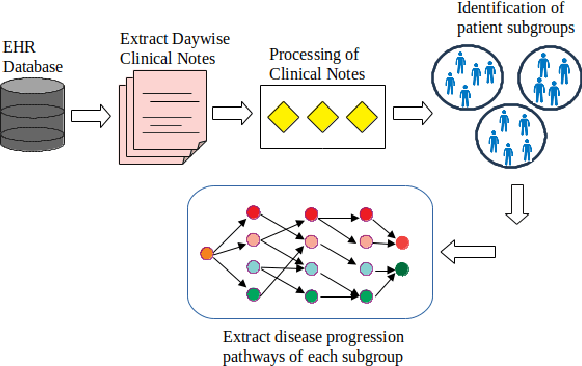Mapping Patient Trajectories: Understanding and Visualizing Sepsis Prognostic Pathways from Patients Clinical Narratives
Paper and Code
Jul 20, 2024



In recent years, healthcare professionals are increasingly emphasizing on personalized and evidence-based patient care through the exploration of prognostic pathways. To study this, structured clinical variables from Electronic Health Records (EHRs) data have traditionally been employed by many researchers. Presently, Natural Language Processing models have received great attention in clinical research which expanded the possibilities of using clinical narratives. In this paper, we propose a systematic methodology for developing sepsis prognostic pathways derived from clinical notes, focusing on diverse patient subgroups identified by exploring comorbidities associated with sepsis and generating explanations of these subgroups using SHAP. The extracted prognostic pathways of these subgroups provide valuable insights into the dynamic trajectories of sepsis severity over time. Visualizing these pathways sheds light on the likelihood and direction of disease progression across various contexts and reveals patterns and pivotal factors or biomarkers influencing the transition between sepsis stages, whether toward deterioration or improvement. This empowers healthcare providers to implement more personalized and effective healthcare strategies for individual patients.
 Add to Chrome
Add to Chrome Add to Firefox
Add to Firefox Add to Edge
Add to Edge